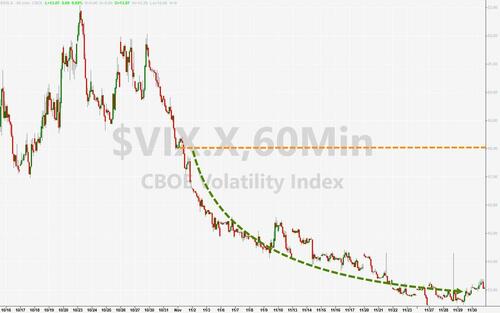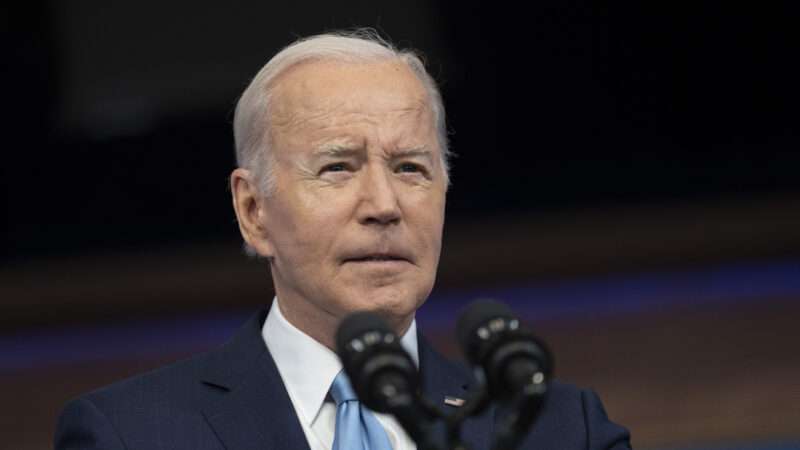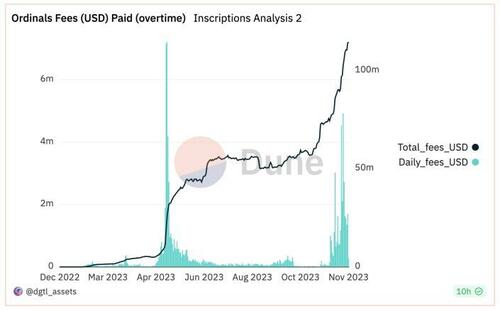On Monday, I started serial-blogging my article, The Myth of the Federal Private Nondelegation Doctrine, which has just come out in the Notre Dame Law Review. I continued this on Tuesday and Wednesday, and I’ll continue serial-blogging it here today and tomorrow. This is a timely issue, because of the horseracing case currently pending in the Fifth Circuit (in which I filed an amicus brief on behalf of the Reason Foundation and others). Here’s Part II.B, explaining how there are no nondelegation doctrines specific to private parties — here, focusing on separation-of-powers theories like the Appointments Clause. (Please be sure to refer to the real version if you want all the footnotes!)
* * *
B. No Private Separation-of-Powers Doctrine
Now for the recipient-based theories. I will focus here on the Appointments Clause, which is the most significant recipient-based theory—though much of the discussion of appointments also carries through to issues of removal.
Anyone wielding “significant authority pursuant to the laws of the United States” is an officer of the United States and therefore must be appointed by one of the two methods of officer appointment: presidential nomination plus Senate confirmation, or (optionally for inferior officers) by the President, courts, or heads of departments. (This is only approximately true: see the “continuing and permanent” discussion below.) The requirement of wielding significant federal authority is functional, not formalistic: if someone who could be labeled “private” wields such authority, they are an officer and require the appropriate appointment process.
How does my view above relate to the strong separation-of-powers antiprivatization view? That view would hold that private delegates can never be valid because, not being part of the government, they can never exercise governmental power. The difference between these two views is less than it may appear, and is perhaps merely semantic.
The latter view would presumably hold that, if the invalid private parties go through the constitutional appointment process, that would cure the problem—indeed, the previously private parties would have then become part of the federal government. My view wouldn’t care much about the labeling; perhaps, if the private parties were officers and directors of a private corporation traded on the stock market (which did mostly nongovernmental work), it might seem unnatural, as a matter of common usage, to stop calling the company “private.” I would just say that, public or private, one can wield significant federal authority as long as one is constitutionally appointed.
Both views would agree that appointment cures the problem. But, I would stress, this is exactly the same thing we would say about federal employees: even a traditional federal employee can’t wield significant federal authority without going through the constitutional appointment process. In short, the public-private labeling—and whether the person involved would have been called “public” or “private” before the appointment—shouldn’t much matter.
The bottom line is that the Appointments Clause poses no barrier to privatization or outsourcing. Anyone—employee, contractor, random guy, or other—can equally be the recipient of federal power if subjected to the requisite political accountability through the constitutional appointment process.
1. The “Continuing and Permanent” Limitation
The idea that the Appointments Clause is neutral as between public and private actors is only approximately true. Because of a line of nineteenth-century caselaw, certain sorts of private actors—even when they wield significant government authority—are entirely excluded from the Appointments Clause’s scope. This introduces a certain pro-privatization bias into the Appointments Clause.
In United States v. Hartwell, a Treasury clerk challenged whether he was an “officer” subject to the criminal penalties provided for officers in an embezzlement statute. The Supreme Court apparently assumed that an “officer” under the statute was the same as an officer under the Appointments Clause, and distinguished the category of officers from that of contractors. “An office,” the Court wrote, “is a public station, or employment, conferred by the appointment of government. The term embraces the ideas of tenure, duration, emolument, and duties.” A “government contract,” by contrast, “is necessarily limited in its duration and specific in its objects. The terms agreed upon define the rights and obligations of both parties, and neither may depart from them without the assent of the other.” By that standard, and because the defendant’s duties were “continuing and permanent,” the defendant was an officer and thus subject to the statutory penalties.
In United States v. Germaine, a surgeon appointed by the Commissioner of Pensions to examine pensioners was prosecuted for violating an extortion statute that applied to “officer[s] of the United States.” The Supreme Court again assumed that this statutory category tracked the constitutional category, and endorsed the Hartwell factors of continuing and permanent duties. This surgeon, the Court observed, took no oath; his compensation wasn’t governed by any regular appropriation; and his duties were only “occasional and intermittent,” because he was engaged on an as-needed basis whenever some pensioner needed to be examined; therefore, he wasn’t an officer.
And in Auffmordt v. Hedden, an importer challenged the appointment of a merchant appraiser on the grounds that the appraiser was an officer and should have been appointed under Article II. (Finally, a case that directly implicates the constitutional category of officers rather than a statutory designation.) The Supreme Court said the Appointments Clause didn’t apply: the merchant appraiser was selected on an ad hoc basis for cases where appraisals were requested; he didn’t fall within the civil-service law; the statute just required that he be a “discreet and experienced merchant”; and he lacked the Hartwell/Germaine factors of tenure, duration, continuing emolument, and continuous duties. (These cases, particularly Germaine and the “occasional and temporary” versus “continuing and permanent” distinction, continue to be cited in Supreme Court cases and in an Office of Legal Counsel opinion.)
Because of the Hartwell/Germaine/Auffmordt trilogy, certain “occasional and temporary” agents can be used without having to be appointed under Article II. The Supreme Court has never directly stated whether private attorneys general or qui tam relators need to be appointed under Article II, but this longstanding caselaw suggests that they don’t. (That said, there is some disagreement about how far this doctrine extends: the D.C. Circuit held that the appointment of an arbitrator to resolve Amtrak-related disputes violated the Appointments Clause, even though that arbitrator’s duties seemed temporary.)
Perhaps all this is wrong, and the government should be more limited in hiring contractors—or deputizing private attorneys general—to perform significant governmental functions. (Texas’s recent experiment with antiabortion bounty hunters shows that the concern over private law enforcement can be bipartisan, though this state scheme doesn’t raise Article II questions.) In my view, the applicability of the Appointments Clause should turn on the function that someone performs—someone who exercises significant federal authority should be appointed as an officer, even if they only exercise that authority occasionally and for a limited time. Perhaps the Hartwell/Germaine/Auffmordt cases can be limited because the supposed officers in those cases didn’t have very significant duties in any event.
But we don’t need to resolve those questions right now. For purposes of this Article, it suffices to observe that there’s no special doctrine prohibiting private contractors—if anything, quite the contrary. The government seems to be able to escape at least some accountability through contracting out. Even if this is bad on policy grounds, this doctrine is, to some extent, pro–private delegation.
2. Does This Exempt All Contractors?
There’s still an open question in the doctrine. What if the government calls on people occasionally to perform federal functions—which apparently triggers the “occasional and temporary” exemption—but the work comes up so often that it’s enough to occupy particular people full time, so that in practice, those people support themselves doing nothing but this federal work? Or what if the government contracts with a private person or private organization to perform federal work on an ongoing basis—work that, if performed by employees, would make us call those employees officers? Or what if Congress delegates such standing power to a private organization (as in the case of the Horseracing Integrity and Safety Authority)? Should such people be subject to the Appointments Clause, even taking Hartwell/Germaine/Auffmordt as given?
This seems to be an unresolved question. On the one hand, the Supreme Court often contrasts officers with mere “employees,” which suggests that officers are particularly exalted federal employees, and that someone who isn’t even a federal employee could never be an officer. Indeed, in Buckley v. Valeo, the Court wrote (citing Auffmordt and Germaine) that “[e]mployees are lesser functionaries subordinate to officers of the United States,” and much more recently, in United States v. Arthrex, Inc., Chief Justice Roberts contrasted officers with “‘lesser functionaries’ such as employees or contractors.” On the other hand, none of those statements definitively rules out the possibility of nonemployee officers. Moreover, those statements are just dicta, because the agents whose status was disputed in those cases (like in the vast majority of Appointments Clause cases) were unambiguously federal employees.
This situation is distinguishable from the Hartwell/Germaine/Auffmordt trilogy. The “occasional and temporary” subdoctrine is not a blanket pro-privatization rule. If private status were enough to exempt one from the Appointments Clause, Germaine and Auffmordt could have been radically simplified and one wouldn’t have had to look at “occasional and temporary” factors. Some private contractors are exempt from the Appointments Clause under this doctrine, but not all.
The better position is that officer status should follow function, regardless of the specific contractual arrangement. After all, even government employment is just a particular sort of contract. There is no strong difference (or at least there shouldn’t be a strong difference for constitutional purposes) between a government employee, a government contractor exercising the same power, or a private organization that is given such power by statute.
Moreover, the Supreme Court has recently stressed, in United States v. Arthrex, Inc., that the exercise of executive power “acquires its legitimacy and accountability to the public through ‘a clear and effective chain of command’ down from the President, on whom all the people vote.” Arthrex involved traditional government employees, but the focus on the importance of presidential control—and Congress’s inability to avoid such control by assigning power to agents not controllable by the President—strengthens the case that anyone can be an officer if their powers are significant enough.
Therefore, formally private actors who perform federal work on a regular basis should count as officers and be subject to the Appointments Clause.
The Office of Legal Counsel (OLC), after surveying the caselaw and a lot of historical evidence, has taken the same view: “[I]t is not ‘within Congress’s power to exempt federal instrumentalities from . . . the Appointments Clause’; . . . Congress may not, for example, resort to the corporate form as an ‘artifice’ to ‘evade the “solemn obligations” of the doctrine of separation of powers . . . .'” A key element in whether one is an officer is whether one has “delegated sovereign authority,” which “one could define . . . as power lawfully conferred by the government to bind third parties, or the government itself, for the public benefit. . . . [S]uch authority primarily involves the authority to administer, execute, or interpret the law,” and generally includes “functions in which no mere private party would be authorized to engage.”
How does this apply to delegations of power to private parties? “A person’s status as an independent contractor does not per se provide an exemption from the Appointments Clause,” though most contractors turn out to be exempt because they usually merely provide goods and services rather than wield power, and “in most cases . . . their actions . . . have no legal effect on third parties or the government absent subsequent sanction.”
Appointments Clause constraints, the OLC stressed, do apply “in those rare cases where a mere contractor [does] exercise delegated sovereign authority (and [does] so on a continuing basis).” (Thus, in United States v. Maurice, Justice Marshall (riding circuit) held that James Maurice, an “agent of fortifications” and apparently a mere contractor, was in fact an officer, and thus invalidly appointed, because of his “important duties.”)
There is thus no antiprivatization rule for Appointments Clause purposes. Aside from the “occasional and temporary” doctrine, which is a limited pro-privatization rule, the rule is neutrality between the public and private sectors. Anyone with continuing duties who satisfies Buckley‘s requirement of “exercising significant authority pursuant to the laws of the United States” is an officer and—whether public or private—must therefore be properly appointed. Or maybe—if one prefers this formulation—the fact that someone exercises such authority should be enough for us to label them “public,” thus sidestepping public-private questions entirely.
3. A General Separation-of-Powers Critique
But now let’s consider a popular version of the separation-of-powers critique, which holds that, to be a legitimate recipient of a federal delegation, one needs to be a member of Articles I, II, or III. Private parties, according to this critique, supposedly don’t qualify because they’re not part of any of those branches of government.
The idea that all federal power must reside in one of the three branches gets some support from Printz v. United States, where the Court struck down a statute commandeering state officers to enforce federal law: this arrangement not only violated federalism (i.e., state-federal relations) but also disturbed the equilibrium of powers within the three federal branches (i.e., giving executive power to someone outside the executive).
Thus, for instance, one can object on Article II grounds to the delegation to individuals of the power to enforce federal statutes, for instance through qui tam suits. Even if the occasional nature of such delegations makes them constitutional under the “continuing and permanent” doctrine, one can imagine more regular arrangements, for instance if state prosecutors are authorized to prosecute federal crimes in state court—or if Congress creates a whole agency, run by private parties, to regulate thoroughbred horse racing.
This is a dormant theme of Friends of the Earth, Inc. v. Laidlaw Environmental Services (TOC), Inc., though the point wasn’t squarely presented there. As Justice Kennedy wrote:
Difficult and fundamental questions are raised when we ask whether exactions of public fines by private litigants, and the delegation of Executive power which might be inferable from the authorization, are permissible in view of the responsibilities committed to the Executive by Article II of the Constitution of the United States.
One might think that this theory is diametrically opposed to the view I expressed above, which is that there is no bar to private parties’ receiving delegated federal power. But in fact, the difference may be merely semantic; these are just two ways of saying the same thing.
This strict separation-of-powers view opposes delegations to private parties because they’re not part of the government. But presumably, if those private parties went through presidential nomination and Senate confirmation, the problem would be cured, because that appointment would have made them part of the federal government (most likely part of the executive branch). Perhaps a proponent of that view would say that this “private” party had thereby become “public.”
And my view is essentially the same: any private party can validly wield federal governmental power, provided they are properly appointed. I don’t particularly care whether we label them “public” or “private,” because I don’t think this labeling should matter much. Maybe the Horseracing Integrity and Safety Authority members would be “public” if properly appointed—or maybe we should respect their statutory labeling as “private” and the fact that the Authority is organized as a private organization under state law. Hypothetically, if we appointed the directors and officers of a private corporation (perhaps even a publicly traded one), it would seem unnatural to say these officers are now “public” or “governmental,” especially if the corporation mostly does nongovernmental work. I would be happy to continue calling them private, even while observing that they wield some federal governmental power and must therefore be constitutionally appointed. Most of all, because I don’t think the public-private distinction matters for the Appointments Clause, I would adopt a live-and-let-live attitude on the categorization question.
4. How Private Status Can Be Relevant
There are a few ways that private status can end up being relevant as a practical matter, though none of them amounts to a per se antiprivatization rule.
a. The Temporary Contractor Exception
As noted above, private status can actually make certain delegations more constitutional: even if the private delegate is a state actor (so that constitutional rights apply), if its exercise of power is temporary or ad hoc, the use of such a delegate may not be subject to the Appointments Clause. I prefer a regime where officer status depends strictly on function, but it seems that under current doctrine, this exception is pro-privatization.
b. What Type of Power Is a Delegate Exercising?
Next, there is the issue of what type of power a delegate is exercising. Some delegates exercise a clearly governmental power, but (even when the delegate is federal) it might not be federal power—which removes that delegate from the scope of the Appointments Clause.
For instance, territorial officers might be exercising the power of an essentially local government—such as Puerto Rico or the District of Columbia—rather than that of the federal government, so the Appointments Clause doesn’t govern their selection or appointment. (This is why democratic elections in the territories don’t violate the Appointments Clause.) The Appointments Clause doesn’t apply here—not because the officials themselves aren’t federal (they are!), but because the type of power they’re exercising is nonfederal.
Similarly, by setting the rules of state tort law, state judiciaries and legislatures determine the scope of federal sovereign immunity in tort claims against the federal government. This is an explicit delegation from Congress—and a dynamic delegation, because Congress didn’t know the full scope of the waiver of sovereign immunity that it would be agreeing to over time when it passed the Federal Tort Claims Act in 1946. By defining who can and can’t get married, and what it takes to be married, state legislatures can determine their citizens’ federal tax liability. This was a semiexplicit delegation from Congress, because Congress used the term “spouse,” which, in the absence of a federal definition, was reasonably interpreted to incorporate state-law definitions—and with the repeal and replacement of the Defense of Marriage Act in 2022, that semiexplicit delegation has now become explicit. Also, state courts can determine the scope of federal statutory rights (subject, of course, to Supreme Court review) by hearing federal-question cases. This is an implicit delegation by Congress: Congress could make federal jurisdiction exclusive (as it has in antitrust), but in most cases hasn’t done so.
There, too, state governments are exercising their own state powers (even if those decisions are then dynamically incorporated into federal law), so no Appointments Clause inquiry is necessary there. This could also validate dynamic incorporations of foreign or tribal law into federal law—because the Constitution recognizes that foreign governments, just like Indian tribes, have their own sovereignty.
The situation is different if states directly enforce federal law—for instance, under the Judiciary Act of 1789, which allows state justices of the peace and magistrates to arrest those suspected of committing federal crimes. Presumably, if commandeering alters the federal-state balance of power under Printz, even empowering state governments in this way would do the same. Perhaps state enforcement of federal law is indeed unconstitutional under Article II.
How does all this affect private delegations? There will be some cases where a private delegate lacks the power to do what a state could do. When the state alters someone’s federal tax liability by defining marriage, it’s exercising a state power. But if a private party were somehow given a similar power to affect someone else’s federal tax liability, it would only be exercising federal power, so the Appointments Clause would apply.
Closer to home: If federal law incorporated state horse-racing regulation (making violations of state law into federal offenses), the state regulators would be using their state power and wouldn’t need to be federally appointed. But when federal law empowers a private Horseracing Integrity and Safety Authority to promulgate regulations, the Authority members aren’t exercising any power other than federal power.
There might be tricky questions about what happens if the federal government simply dynamically incorporates the standards of a private trade organization. What if federal regulations dynamically incorporate American Medical Association standards for impairment? (Suppose this delegation satisfies Article I Nondelegation Doctrine concerns by providing an intelligible principle enforceable by judicial review. And suppose the organization had been promulgating similar standards long before they were ever given binding legal force. And suppose the private organization isn’t given any enforcement powers of its own; the standards merely affect one’s eligibility for various federal disability benefits.) One might argue that giving legal force to private standards isn’t within the scope of the Appointments Clause, though perhaps the better view is that anyone who can unilaterally alter someone else’s rights and duties under federal law requires federal accountability.
But we don’t need to resolve those questions right now. Here, it’s enough to observe that private status might matter in some cases, because a private party might be exercising federal power in cases where an analogous government party would be exercising state power—which would affect the applicability of the Appointments Clause.
Still, it’s important to remember that none of this is a per se rule against privatization: all such problems can be fixed merely by properly appointing the people involved.
c. Contracting with Corporations
In addition, another form of privatization implicates the Appointments Clause: giving a corporation (or any other association or artificial person) substantial federal governmental authority.
It’s generally constitutional for Congress to create corporations, because acting through the corporate form is just a method of doing business that Congress might consider necessary and proper to achieve some end. But can a contract grant a corporation the authority to wield power that would otherwise be wielded by appointed officers? Or can a statute grant such power—say, the power to promulgate binding legal rules—to a “private, independent, self-regulatory, nonprofit corporation” like the Horseracing Integrity and Safety Authority?
The concept of “corporate personhood” has been criticized in some quarters. But generally, recognizing corporate personhood—and granting certain rights to corporations—is just a convenient shorthand for referring to actual people. As the Supreme Court wrote in Burwell v. Hobby Lobby Stores, Inc.:
A corporation is simply a form of organization used by human beings to achieve desired ends. An established body of law specifies the rights and obligations of the people (including shareholders, officers, and employees) who are associated with a corporation in one way or another. When rights, whether constitutional or statutory, are extended to corporations, the purpose is to protect the rights of these people. For example, extending Fourth Amendment protection to corporations protects the privacy interests of employees and others associated with the company. Protecting corporations from government seizure of their property without just compensation protects all those who have a stake in the corporations’ financial well-being. And protecting the free-exercise rights of corporations . . . protects the religious liberty of the humans who own and control those companies.
However, even though corporations often enjoy the same rights as natural persons, granting powers to corporations can sometimes be constitutionally problematic. Suppose the federal government chooses to contract with Acme Corp. to conduct certain governmental activities, where Acme Corp. would be exercising substantial federal power. Suppose the President and Senate, recognizing that this would make Acme Corp. an officer of the United States, even put Acme Corp. through the presidential nomination and Senate confirmation process. Is anything wrong with that?
What’s wrong is that, under corporate law, the shareholders of Acme Corp. can fire their officers and appoint new officers—and hire new employees—at any time. The shareholders can also sell their shares to other people at any time. So Acme Corp. has no fixed identity in terms of actual human beings, whether we’re talking about owners, directors, officers, or employees.
But when we say that Acme Corp. is exercising substantial federal power, that just means that certain people connected with Acme Corp. are exercising that power, because a corporation is an abstract entity and can only act through people. Talking about Acme Corp. as an officer of the United States is thus sloppy: really, particular individuals who exercise substantial federal power are officers, and those people should undergo presidential nomination and Senate confirmation. To appoint the corporation, given the rules of corporate law, would be to sanction the “appointment” of new officers that were never properly appointed—as well as the removal of officers without the consent of the President or of whatever superior officers would normally remove those officers.
So instead of appointing corporations, the President and Senate should nominate and confirm all the corporate officers and employees who would (based on their duties) qualify as officers of the United States; a statute should specify how those officers are removed (or, by default, removal should be at will by the President); those officers should keep their legal powers (regardless of the views of anyone else in the corporation) unless they’re removed by the relevant procedure; and any new people that the corporation might seek to put into those positions need a new constitutional appointment process.
But is this anti-corporate-appointment rule a special antiprivatization rule? No: this is no different than any other process that would take appointment of officers out of the hands of the constitutionally required actors. Lucia v. SEC holds that the appointment of ALJs can’t be delegated to agency employees below the level of “Heads of Departments,” because only the constitutionally specified people can appoint officers; and the same is true for the appointment of officers who happen to work for corporations. The President couldn’t appoint the EPA as a collective body, assuming the current EPA leadership could hire all EPA policymakers and staff and fill its own vacancies using its own internal rules—and appointing a corporation would suffer from exactly the same infirmity.
Moreover, in principle, one can imagine a process—whether set by statute or by contract—that would let a corporation exercise substantial federal power but would strictly limit any personnel changes among the class of officers to be consistent with the Appointments Clause and removal power, and would require the removal from the corporation of any officer who was removed under the statutory procedure. Would such a corporation still be called “private”? Maybe it would still be natural to call it private, because the corporation could still belong to private shareholders who would collect the contractual payments, and it could even be publicly traded on a stock exchange. But as I’ve said above, we shouldn’t put much stock in this sort of labeling.
The post The Myth of the Federal Private Nondelegation Doctrine, Part 4 appeared first on Reason.com.
from Latest https://ift.tt/R8clXzh
via IFTTT






























